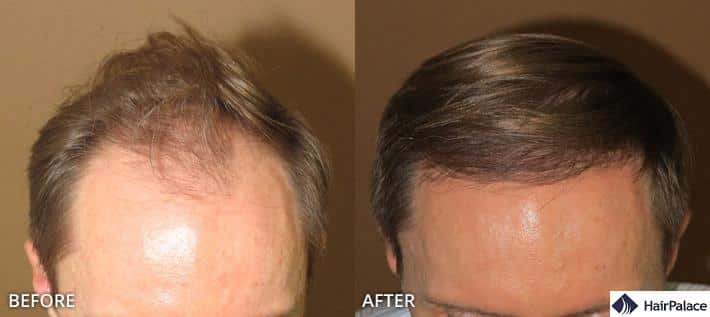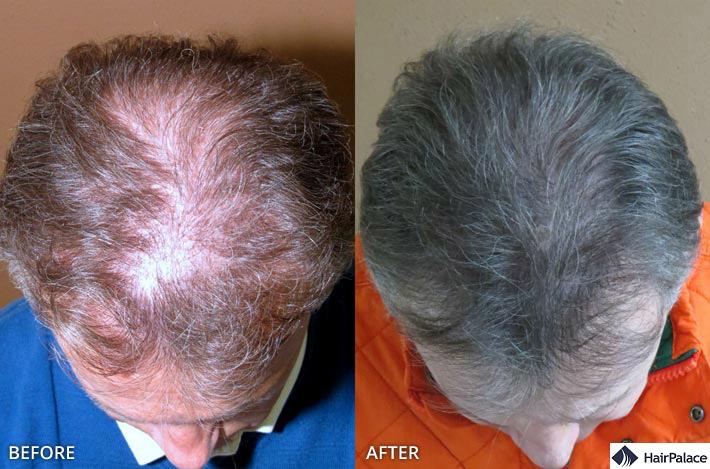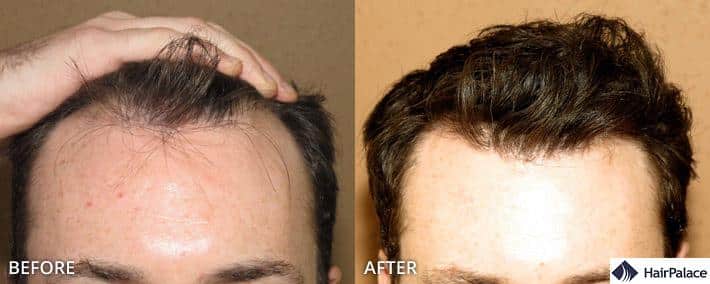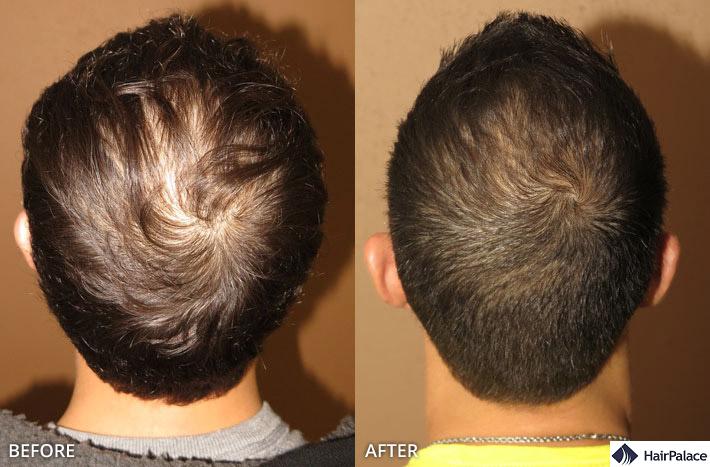Robotic Hair Transplant: Is it The Best Choice?
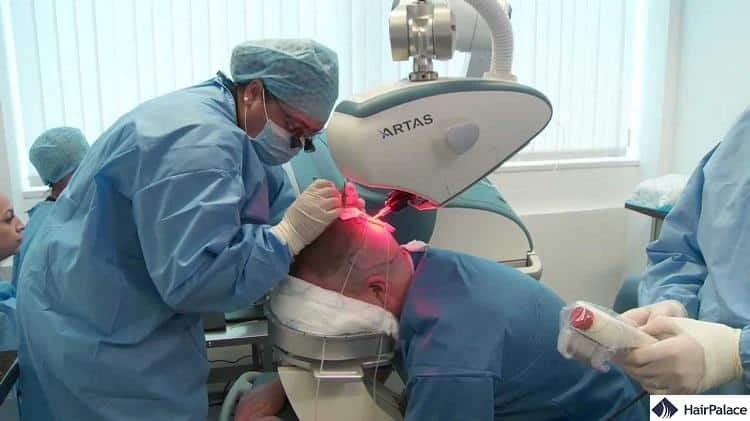
Robotic hair transplant is an advanced hair restoration technique that uses robotic technology to assist in the precise extraction and transplantation of hair follicles.
The most common system, ARTAS, uses AI and robotics to identify the best donor follicles and ensure accurate, minimally invasive extraction.
This method enhances precision, reduces the risk of human error, and typically results in faster recovery times and more natural-looking outcomes.
The goal is to make the procedure virtually undetectable, and as pleasant as possible. These are always the main concerns of a hair transplant surgeon.
In this article, we will explore how the robotic hair restoration procedure is done, weigh the pros and cons, and see how it compares to other techniques.
What is it?
This is a technique in which the extraction process is done with the use of a robotic arm. This allows for higher precision and comes with lower risks.
The robot is only used for extraction, the implantation is always done by a surgeon.
How does a robotic hair transplant system work?
There are currently two types of robotic technology used for hair restoration.
Both use advanced digital imaging, to select and harvest hair follicles from the donor area.
Both can extract micrografts, as the extracted hair grafts are between 0.8 and 1 mm long.
Regardless of the technique, hair transplant surgery always starts with the recipient sites being shaved and drawn by the surgeon.
This is followed by the injection of a local anaesthetic to numb the scalp and make the surgery painless for the patient.
The robotic hair restoration procedure takes only half the time required to carry out a traditional hair transplant.
The surgery doesn’t damage the epidermis and leaves no linear scar.
The signs of the surgery become almost invisible after 10 days, creating a completely natural look.
Most of the clinics equipped with the latest technology use a robotic system to extract individual follicles and then implant them manually using either the DHI(Direct Hair Implantation) or the FUE(Follicular Unit Extraction) method.
In order to boost the results of the surgery many hair clinics pair the procedure with PRP (Platelet Rich Plasma) treatment, which increases blood flow to the scalp contributing to additional hair growth.
Types of robotic hair transplant surgery
1. Neograft SAFER Robot:
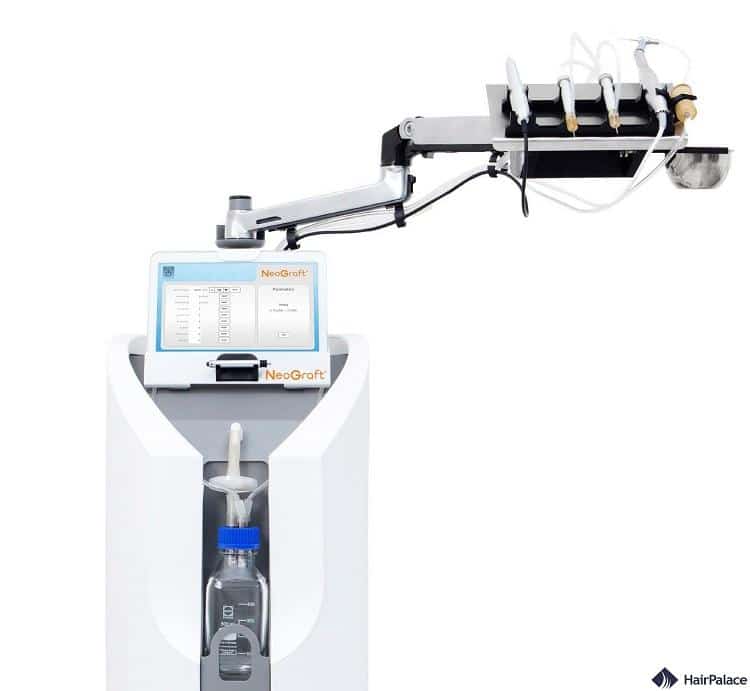
Neograft became the first company to launch a hair transplant surgery robot in 2009 with its S.A.F.E.R. system.
This robot hair transplant method uses a compressed micro-punch system that is equipped with a rotating micromotor in order to “suck out” each hair follicle and extract them from the scalp.
During the harvesting, the surgeon takes the punch in hand and carefully adjusts the speed at which the rotary motor operates depending on the quality and nature of the patient’s hair.
The grafts are then removed and put into a sterile saline solution.
Once this step is complete the surgical team will carefully analyze and sort the hair follicles.
Then they create micro incisions along the recipient sites and manually implant the transplanted hair, using either the FUE or the DHI method.
2. ARTAS Robotic Hair Transplant:
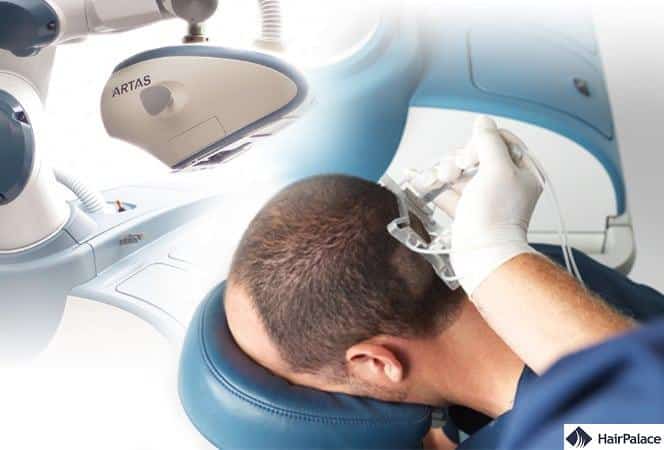
The ARTAS system was created by an American company called Restoration Robotics in 2008.
It is the most widely used robotic system in the world.
ARTAS is a larger machine than SAFER, and it is equipped with digital cameras and automated micro-punches that are placed directly on the patient’s head.
The cameras allow the surgeon to see every detail of the operation and make adjustments if necessary.
The robot utilizes several complex algorithms in order to automatically select and extract the strongest and healthiest follicular units.
The system regularly unloads harvested grafts, making them available to the surgical team.
Afterward, the harvested grafts are put into a saline solution, and following a thorough analysis by the medical team, the follicles are implanted into the thinning areas manually with the use of the FUE or DHI method.
The company launched a newer version of the ARTAS hair transplant robot in 2018, that not only harvests but also implants follicles on its own.
This reduces the time needed to complete a hair transplant surgery quite significantly.
The machine isn’t as widespread as its predecessor yet, but more and more specialized clinics are transitioning to it.
Robotic FUE hair transplant cost
- Turkey: €1500 to €3500
- UK: £3000 to £8000
- Netherlands : €3000 to €8000
- Switzerland: €4000 to €9000
- United States: $6000 to $12,000
The prices are for robotic extraction and implantation of 2500 grafts with the FUE technique, as well as PRP treatment.
14 Advantages of Robotic Hair Transplantation
ARTAS robotic hair transplant surgery has several advantages over traditional methods:
- Able to visualize the surface of the scalp in 3D with micro-level precision.
- Able to create stereo digital imaging maps, angle orientation, and direction for each follicular unit.
- Assesses the density and distribution of follicular units
- Able to monitor and update the status of each follicle 50 times a second
- Artificial intelligence is capable of setting the depth and alignment of follicular units.
- Accurately selects and analyzes grafts from the donor areas with no risk of linear scarring
- Identifies and creates optimal recipient areas and implants each harvested graft individually.
- Protects the existing hair on the patient’s scalp, and maintains the natural appearance of both the donor site and the recipient area
- The intelligent algorithms employed by the ARTAS system make the surgeon’s job easier, as it is able to analyze and evaluate the quality of hair on its own.
- Reduces the length of hair transplant surgery by 50%
- The shorter surgery time typically leads to higher customer satisfaction
- Reduces the number of staff members needed to facilitate the procedure, which reduces the costs associated with the surgery
- It is a minimally invasive procedure, which only causes slight discomfort
- Reduces the time between extraction and implantation, which leads to a higher regrowth rate
Lastly, due to the high precision of the robotic arm, nearly 100% of the extracted grafts remain intact and can be implanted with a regrowth rate of more than 97%.
Although it is only a minimally invasive procedure, in certain cases the robotic system can damage neighbouring grafts, which never happens with strip surgery or an FUE hair transplant.
What are the disadvantages of a robotic FUE hair transplant?
As with everything, the ARTAS procedure also has certain downsides, although the pros certainly outweigh the cons.
- These methods aren’t suitable for very sparse or frizzy hair
- The ARTAS system can easily harvest hairs from the back or side of the skull. However, it is unable to harvest hair follicles from elsewhere, such as the neck or face. This doesn’t cause an issue with the DHI or FUE method. Thus robotic surgery isn’t fitting for patients suffering from complete hair loss on the scalp.
- While the procedure protects extracted hairs, it may damage nearby follicles along the donor area.
Robotic hair transplant results
Is a robotic hair transplant better?
Let’s take a look at the different hair loss treatment options and how they compare to one another.
FUE
This method is performed manually and FUE can be applied to both the extraction and implantation phases of the procedure.
The surgeon extracts individual follicles from either the back or side of the head and then implants them directly into the recipient sites.
The surgery leaves no scars and offers a relatively quick healing process.
ARTAS robotic hair transplant
As we’ve explained in detail, this method uses a robotic arm to analyze, select and suck up the follicles.
Then it makes them available for the surgeon, who implants them into the balding areas via either the FUE or DHI technique.
With the appearance of the newest ARTAS 9X robot, this process became completely automated, largely decreasing surgery time and increasing precision, regrowth rate, and reliability.
FUT(Follicular Unit Transplantation)
This is the oldest transplantation technique still in use. The surgeon removes a small strip of flesh from the donor area, which is then used to harvest hair follicles.
The follicles are then implanted into the areas affected by baldness. The FUE method is generally preferred by patients over FUT.
This is largely due to the fact that, unlike FUE, FUT leaves a visible scar across the donor area.
DHI
This procedure is performed with the use of a Choi punch pen, which is able to extract and re-implant hair almost instantly.
Making DHI one of the least invasive techniques. However, due to the precision needed to carry out this type of surgery, it is also one of the most expensive types of treatment.
Conclusion
This new innovation in hair transplantation certainly holds many advantages. It offers the highest precision and the lowest surgery time.
It also protects the existing hair from any damage during the surgery and eliminates the chance of human error.
This method comes with a high price, and while it may protect the extracted hair, it can easily damage follicles around the donor area.
The procedure can cost anywhere from £3000 to £19000.
It is also important to note that while the ARTAS robot is FDA-approved, there are almost no clinical studies examining the ARTAS robot.
This means that there are still a lot of uncertainties surrounding the long-term effects and efficacy of the procedure.
Robotic Hair Transplant FAQ
The ideal candidate for an ARTAS hair transplant must have enough donor hair at either the back or side of the dead. As the robot is unable to harvest hair from other areas.
Artas robotic hair transplant isn’t suitable for people with sparse or frizzy hair, or hair loss caused by medication, stress, or any other reversible cause.
The recovery time is relatively quick. Most patients can return to work and perform light exercises within a week. You can return to your normal hair care routine after about 10 days. However, it is advised to refrain from heavy exercise, alcohol, or swimming in the first few weeks.
Possible side effects include infection, haemorrhage, telogen effluvium, pruritus, cyst formation, and swelling.
You will only notice the final results of an ARTAS hair transplant after about 12 months. Your transplanted hair will fall out after 3 to 4 months, which signals the beginning of natural hair growth.
An ARTAS hair transplant procedure can cost between £4000 to £19000. However, the actual cost of an ARTAS hair transplant may vary based on location, the experience of the surgeon, and the severity of your hair loss.
Last medically reviewed on July 17th, 2024
- Avram MR, Watkins S. Robotic Hair Transplantation. Facial Plast Surg Clin North Am. 2020 May;28(2):189-196. doi: 10.1016/j.fsc.2020.01.011. PMID: 32312506.https://pubmed.ncbi.nlm.nih.gov/32312506/
- Vañó-Galván S, Camacho F. New Treatments for Hair Loss. Actas Dermosifiliogr. 2017 Apr;108(3):221-228. English, Spanish. doi: 10.1016/j.ad.2016.11.010. Epub 2017 Jan 3. PMID: 28061966.https://pubmed.ncbi.nlm.nih.gov/28061966/
- Rose PT, Nusbaum B. Robotic hair restoration. Dermatol Clin. 2014 Jan;32(1):97-107. doi: 10.1016/j.det.2013.09.008. PMID: 24267426.https://pubmed.ncbi.nlm.nih.gov/24267426/
- Pereira JO, Pereira Filho JO, Cabrera Pereira JO. Megasessions for Robotic Hair Restoration. J Drugs Dermatol. 2016 Nov 1;15(11):1407-1412. PMID: 28095555.https://pubmed.ncbi.nlm.nih.gov/28095555/
- Avram MR, Watkins SA. Robotic follicular unit extraction in hair transplantation. Dermatol Surg. 2014 Dec;40(12):1319-27. doi: 10.1097/DSS.0000000000000191. PMID: 25418806.https://pubmed.ncbi.nlm.nih.gov/25418806/

